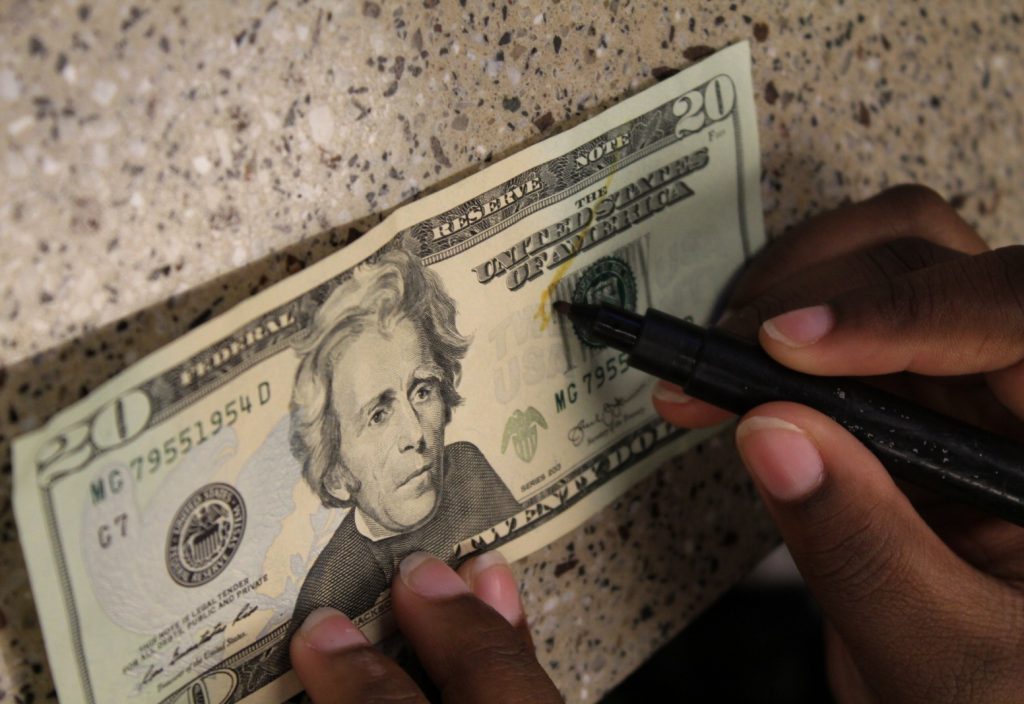
Fake $20 bills have been popping up all around Big Rapids, and the source of the counterfeit currency has yet to be identified.
Thursday, Nov. 29, Ferris Student Financial Services announced reports of counterfeit bills being used throughout Big Rapids, along with one instance on Ferris’ campus, but there is no further information at this time.
“I think I would be able to see the difference if someone said, ‘There’s a fake dollar bill, and there’s a real dollar bill,’” Ferris business administration senior Kelly Babcock said. “But in a market situation, if I get handed a dollar bill, I would put it in my purse and not think anything of it.”
According to Ferris Student Financial Services, identifying counterfeit notes has become more difficult. Special pens are used when identifying faux banknotes, which apply an iodine-based ink to the bill. If the bill is genuine, the pen should either leave a yellow or colorless mark. However, these new counterfeit bills in Big Rapids are having the same reactions as actual bills, making it harder to identify them.
“The fact that it’s coming to campus is frustrating,” Ferris biotechnology senior Jordan Lee said.
Once a counterfeit bill is exchanged anywhere on campus, Ferris employees are required to gather information from the customer that exchanged the counterfeit bill. Employees are not allowed to keep that customer on campus and are expected to accept the bill regardless if it’s real or fake.
“I work with money, but I’ve never once thought about looking at any bill to see if it’s fake or not,” Ferris marketing junior Madison Slater said. “So it gets me thinking, should I be looking?”
According to the United States Secret Service, as of 2015, an estimated $147 million of counterfeit currency is in circulation globally, with about 60 percent circulation through the United States. The $20 bill is the most common banknote to be counterfeited in the U.S, with the $100 bill being the most counterfeited overseas.
“I’ve worked with money a good deal,” Ferris industrial engineering junior Travis Whaley said. “The only difference I feel like you could probably tell that they’re on the newer looking side. A lot of money that people handle is weathered and worn a little bit.”
In recent years, Americans have started carrying less cash. According to the New York Post, a study conducted by Capital One showed that 1 in 4 Americans do not carry cash with them regularly. For millennials, the ratio is even lower, with 1 in 3 millennials saying they do not carry cash regularly.
“I don’t really use cash a whole lot anyway,” Whaley said. “And if I do, and I get caught in a situation like that, that’s life. You move on.”
